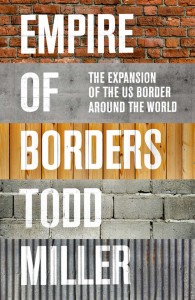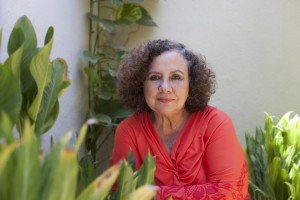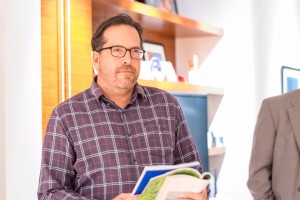Journalists to Discuss Their Experiences Documenting Central American History at CSUN Lecture Series
 As part of its mission to collect, preserve and disseminate the visual history of ethnic minority communities, California State University, Northridge will highlight two journalists’ coverage of Central America, in its spring 2019 Bradley Center Lecture Series lecture series, from 2 to 4 p.m. on March 29 and April 19.
As part of its mission to collect, preserve and disseminate the visual history of ethnic minority communities, California State University, Northridge will highlight two journalists’ coverage of Central America, in its spring 2019 Bradley Center Lecture Series lecture series, from 2 to 4 p.m. on March 29 and April 19.
Located at the Tom and Ethel Bradley Center within the Delmar T. Oviatt Library, this series will explore the work of Nicaraguan photojournalist Margarita Montealegre and independent journalist Todd Miller, documented the recurrent liberation struggles that have taken place in Central America and other regions of the world challenging the rapid growth of border walls around the world. This spring series is co‐sponsored by the Delmar T. Oviatt Library, the Department of Journalism, and the Department of Central American Studies.
“This second installment of our spring lecture series will focus on how memory and solidarity toward liberation movements have played a key role in storming the increasing number of walls emerging around the world,” said journalism professor José Luis Benavides, director of the Tom and Ethel Bradley Center.
The first spring lecture, “Images and Memory as the First Nicaraguan Photojournalist,” featuring Montealegre, will take place March 29. Montealegre worked as the first female staff photographer for newspapers La Prensa from 1977-79 and Barricada from 1979-83. She will highlight her role in war photojournalism, where she documented the revolution in Nicaragua and the war in El Salvador.

Margarita Montealegre documented the revolution in Nicaragua and the war in El Salvador. Photo provided by Delmar T. Oviatt Library.
“Her visual point of view reveals the collective and individual struggles and emotions of the Nicaraguan people’s contemporary history,” Benavides said.

Todd Miller will explain the increasing expansion of walls around the world that are meant to prevent refugees from fleeing economic inequality, climate disruption and violence. Photo provided by Delmar T. Oviatt Library.
The second lecture, “Empire of Borders, Migration, and Climate Change,” will be held April 19. Miller will explain the increasing expansion of walls around the world that are meant to prevent refugees from fleeing economic inequality, climate disruption and violence. He will speak about how the border industrial complex has boomed in the United States since the 1990s.
“[Miller]’s global reporting highlights not only the rapid enlargement of the border security apparatus around the world and inside national borders, but also the many ways in which people’s liberation struggles in Asia, Central America and Africa are storming the multiple walls placed on them,” Benavides said.
The spring lecture series aims to promote research and contribute to educational efforts through exhibitions, programs and digital archives. It will accompany the digitization of thousands of photographs by Richard Cross, who documented what is considered the first Palenque (community of free, black slaves) in the Americas with Colombian anthropologist Nina de Friedemann. He also photographed the wars in Nicaragua, El Salvador, Honduras, Guatemala and the refugee crisis in Mexico.
Benavides said this digital collection of photographs “will enrich the special digital collection archive of the Tom and Ethel Bradley Center and the Oviatt Library. The series will serve as a preamble for the opening of Richard Cross’ photographic exhibition at the Museum of Social Justice, to happen later this year and titled: ‘Visualizing the People’s History — Richard Cross’ Images of Central America’s Liberation Wars (1979–1983).’”
To make arrangements in advance for persons with disabilities, email library.event@csun.edu or call 818-677-2638. For directions and parking details, please visit http://www.csun.edu/parking/visitor-parking-information.
CSUN’s Bradley Center archives contain more than 1 million images from Los Angeles-based freelance and independent photographers between the 1930s to the present. Approximately 80 percent of the collection is comprised of African-American photographers in and near Los Angeles. The Bradley Center is the only repository for photographs before 1993 from the Los Angeles Sentinel. The Bradley Center’s Border Studies Collection examines the many issues surrounding the border between the United States and Mexico. Through photographic collections, oral histories, manuscripts, videos, newspaper archives and guest lectures, issues such as immigration, human rights, globalization, and economic violence are examined. The Bradley Center is now partnered with the Oviatt Library and has made more than 20,000 digital images available online, with new images added regularly to these collections.

 experience
experience